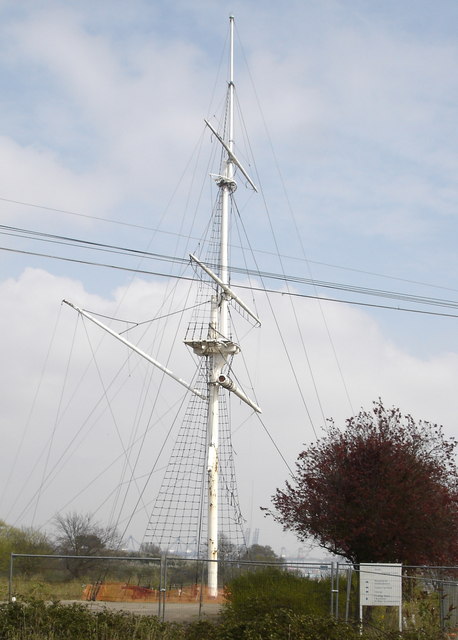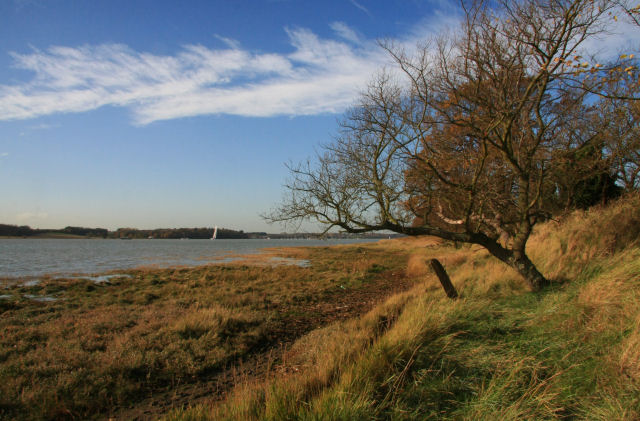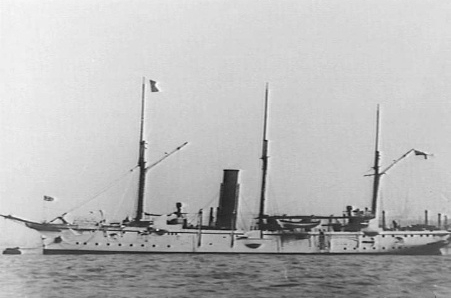|
Shotley
Shotley is a village and civil parish south-east of Ipswich in the English county of Suffolk. It is in the Babergh District, Babergh district and gives its name to the Shotley peninsula between the Rivers River Stour, Suffolk, Stour and River Orwell, Orwell. The parish includes the village of Shotley and the settlements of Shotley Gate and Church End. In 2011 civil parish had a population of 2,342. The village of Shotley is about a mile northwest from the tip of the peninsula, and lies either side of the B1456 road (the Street). In 2018 it had an estimated population of 854. There are two entries for Shotley (Scoteleia) and an adjacent settlement of Kirkton (Cherchetuna) listed in the Domesday Book of 1086. A school is located outside the village (half of 1 km east) opposite the turning into Oldhall Road. Oldhall Road is located east of the village leading north to St Mary's Church. The church is adjacent to a large naval cemetery cared for by the Commonwealth War Graves ... [...More Info...] [...Related Items...] OR: [Wikipedia] [Google] [Baidu] |
Shotley
Shotley is a village and civil parish south-east of Ipswich in the English county of Suffolk. It is in the Babergh District, Babergh district and gives its name to the Shotley peninsula between the Rivers River Stour, Suffolk, Stour and River Orwell, Orwell. The parish includes the village of Shotley and the settlements of Shotley Gate and Church End. In 2011 civil parish had a population of 2,342. The village of Shotley is about a mile northwest from the tip of the peninsula, and lies either side of the B1456 road (the Street). In 2018 it had an estimated population of 854. There are two entries for Shotley (Scoteleia) and an adjacent settlement of Kirkton (Cherchetuna) listed in the Domesday Book of 1086. A school is located outside the village (half of 1 km east) opposite the turning into Oldhall Road. Oldhall Road is located east of the village leading north to St Mary's Church. The church is adjacent to a large naval cemetery cared for by the Commonwealth War Graves ... [...More Info...] [...Related Items...] OR: [Wikipedia] [Google] [Baidu] |
HMS Ganges (shore Establishment)
HMS ''Ganges'' was a training ship and later stone frigate of the Royal Navy. She was established as a boys' training establishment in 1865, and was based aboard a number of hulks before moving ashore. She was based alternately in Falmouth, Harwich (from 1899) and Shotley (from 1905). She remained in service at RNTE Shotley until October 1976.Ward, ''Shore establishments'' pp.62–3. HMS ''Ganges'' was also known as Shotley Training Establishment. Foundation and early history The increasing professionalism of the Royal Navy and the reform of practices during the mid-nineteenth century led to the need to establish new training centres at which recruits could be inducted into navy life. The Admiralty decided to set aside five old laid up hulks in different ports around the country, and use them as bases at which volunteers aged between 15 and 17 could spend a year being educated for future service in the navy. The plan called for an annual intake of 3,500 boys. They were to ... [...More Info...] [...Related Items...] OR: [Wikipedia] [Google] [Baidu] |
Shotley Gate
Shotley Gate is a settlement in the civil parish of Shotley, in the Babergh district, in the county of Suffolk, England. It is located at the tip of Shotley Peninsula and is the larges settlement in the parish of Shotley, in 2020 it had an estimated population of 1461. Shotley Gate has a pub called the Bristol Arms (formerly the Shotley Gate Inn) the settlement of Shotley Gate developed either side of Bristol Hill. By about 800 AD, the Vikings or Danes started to make an appearance in this area. Under the Peace of Wedmore in 878, all land north of the old Roman Watling Street, which ran from London to Chester, was given to the Viking leader, Guthrum. Shotley therefore became part of Danelaw. The peace was short-lived however, and following an unsuccessful Viking attack on Kent, Alfred King of Wessex attacked the enemy in East Anglia. The Anglo-Saxon Chronicle for the year 885 reads as follows: ''The same year sent King Alfred a fleet from Kent into East Anglia. As soon as th ... [...More Info...] [...Related Items...] OR: [Wikipedia] [Google] [Baidu] |
Shotley Pier
Shotley Pier is a disused long railway pier in Shotley Gate, Shotley, Suffolk. Built in 1894 by Frederick Hervey, 3rd Marquess of Bristol the structure was used to service a ferry across the River Stour to Harwich, Essex. The ferry carried mail and coal as well as munitions and sailors for the nearby HMS ''Ganges'' Royal Navy establishment. During the First World War the structure was used to unload German prisoners of war captured at sea and after the war to moor captured German submarines. The pier was later used by fishermen but has been derelict since the late 1980s. In 2018 the pier was purchased by the Shotley Heritage Community Charitable Benefit Society who have since restored the first of the structure. Use Shotley Pier was constructed by Frederick Hervey, 3rd Marquess of Bristol in 1894. It was a railway pier, used by the Great Eastern Railway for a ferry connection between Shotley, Suffolk, and Harwich, Essex, across the mouth of the River Stour. Its main ... [...More Info...] [...Related Items...] OR: [Wikipedia] [Google] [Baidu] |
RNTE Shotley
Royal Naval Training Establishment Shotley, known in the Royal Navy as , was a naval training establishment at Shotley, near Ipswich in Suffolk. Starting in 1905, it trained boys for naval service until 1973 (The school-leaving age was raised to 16 so ended the recruitment of 15-year-old boy sailors). In September 1973, HMS Ganges admitted adult entrants to the Royal Navy who only underwent 6 weeks training (6-week wonders) (the same as at HMS Raleigh near Plymouth) It finally closed in 1976. It had a mixed reputation in the Royal Navy, both for its reputed harsh methods of training boys in order to turn out professionally able, self-reliant ratings and for the professionalism of its former trainees. It is particularly famous for its 143-foot (44 m)-high mast which all boys under training were required to ascend, at least to the half-moon and for the mast manning ceremonies held whenever a dignitary visited the establishment. During the later 1980s and until 1999 RNTE Shotley ... [...More Info...] [...Related Items...] OR: [Wikipedia] [Google] [Baidu] |
River Orwell
The River Orwell flows through the county of Suffolk in England from Ipswich to Felixstowe. Above Ipswich, the river is known as the River Gipping, but its name changes to the Orwell at Stoke Bridge, where the river becomes tidal. It broadens into an estuary at Ipswich, where the Ipswich dock has operated since the 7th century, and then flows into the North Sea at Felixstowe, the UK's largest container port, after joining the River Stour at Shotley forming Harwich harbour. The large Orwell Bridge carries the A14 trunk road over the estuary to the south of Ipswich. Name In the name ''Orwell'', ''Or-'' comes from an ancient river-name — probably pre-Celtic; but ''-well'' probably indicates an Anglo-Saxon naming. In ''A tour through England and Wales'', written in 1722, Daniel Defoe calls the river "Orwel" (though he does this inconsistently). He also mentions that "a traveller will hardly understand me, especially a seaman, when I speak of the River Stour and the River Orwell at ... [...More Info...] [...Related Items...] OR: [Wikipedia] [Google] [Baidu] |
Charles Dare (naval Officer)
Admiral Sir Charles Holcombe Dare KCMG CB MVO (9 November 1854 – 6 August 1924) was an English Royal Navy officer. He commanded several ships and shore establishments before and during World War I, and was knighted by King George V. Family Dare was born on 9 November 1854 to Charles William Dare, a lawyer with a practice in London, and Anne Agnes (née Mew, from Newport, Isle of Wight) in North Curry, Somerset, one of four brothers and a sister. Dare's grandfather, also Charles Holcombe Dare, was a Land Tax Commissioner for North Curry. The family had connections in London and the Isle of Wight. Dare married Emily Agnes Harper, a railway guard's daughter who, unusually for the time, brought an illegitimate daughter, Maud, to the marriage. Naval career Early career Dare enlisted in the Royal Navy as an officer cadet, first serving as a midshipman on HMS ''Monarch'', and was commissioned in 1868. He was a sub-lieutenant until 1879, when he was promoted to lieutenant. In 1893, ... [...More Info...] [...Related Items...] OR: [Wikipedia] [Google] [Baidu] |
Strong Winds Trilogy
The Strong Winds series is a series of children's books written by English author Julia Jones. The books reference many of the settings and characters of the Swallows and Amazons series by Arthur Ransome. The books use adventure stories about sailing to provide action and structure amid developing themes of foster care, mental illness, disability and corrupt officialdom. Plot summary Volume 1 ''The Salt-stained Book'' Donny Walker (aged 13) and his deaf mother Skye travel in a campervan to Shotley to meet Donny's long-lost great aunt Ellen. Following a car accident authorities place Donny in foster care and his mother in a psychiatric hospital. Donny forms friendships with local children, "discovers his inborn prowess as a sailor" and evades a local police officer to find his great aunt.21 July 2011Fiction for older children book review page on ''The Guardian'' website, viewed 13 October 2012 Volume 2 ''A Ravelled Flag'' Donny and his growing number of allies are still battlin ... [...More Info...] [...Related Items...] OR: [Wikipedia] [Google] [Baidu] |
River Stour, Suffolk
The River Stour () is a river in East Anglia, England. It is long and forms most of the county boundary between Suffolk to the north, and Essex to the south. It rises in eastern Cambridgeshire, passes to the east of Haverhill, Suffolk, Haverhill, through Cavendish, Suffolk, England, Cavendish, Bures, Sudbury, Suffolk, Sudbury, Nayland, Stratford St Mary, Dedham, Essex, Dedham and flows through the Dedham Vale Area of Outstanding Natural Beauty. It becomes tidal just before Manningtree in Essex and joins the North Sea at Harwich. Etymology and usage The name is of ambiguous and disputed origin. On one theory, the name ''Stour'' derives from the Celtic ''sturr'' meaning "strong". However, the hydronym, river-name ''Stour'', common in England, does not occur at all in Wales; Crawford noted two tributaries of the Po River near Turin, spelled ''Stura''. In Germany the ''Stoer'' is a tributary of the River Elbe. According to ''Brewer's Britain and Ireland'' the ''Stour'' is pronounc ... [...More Info...] [...Related Items...] OR: [Wikipedia] [Google] [Baidu] |
HMS Ganges
Two ships and a shore establishment of the Royal Navy have been named HMS ''Ganges'' after the river Ganges in India. * was a 74-gun third-rate ship of the line launched in 1782 and broken up in 1816. * was an 84-gun second rate launched in 1821 and finally broken up in 1930. She was the last sailing ship of the Navy to serve as a flagship. * was a training establishment, originally aboard the second HMS ''Ganges''. She was in service between 1865 and 1976. During this period a number of other ships were renamed HMS ''Ganges'' whilst serving as the establishment: ** was ''Ganges'' between 1906 and 1908, and again between 1913 and 1919. She was also ''Ganges II'' between 1908 and 1912, and again between 1920 and 1922. ** was ''Ganges'' between 1908 and 1913. ** was ''Ganges II'' between 1906 and 1908. ** RNTE Shotley, a shore based training establishment set up in 1905 was ''Ganges II'' from 1913 to 1919, and ''Ganges'' from 1927 to 1976. See also * Ganges (disambiguat ... [...More Info...] [...Related Items...] OR: [Wikipedia] [Google] [Baidu] |
Suffolk
Suffolk () is a ceremonial county of England in East Anglia. It borders Norfolk to the north, Cambridgeshire to the west and Essex to the south; the North Sea lies to the east. The county town is Ipswich; other important towns include Lowestoft, Bury St Edmunds, Newmarket, and Felixstowe which has one of the largest container ports in Europe. The county is low-lying but can be quite hilly, especially towards the west. It is also known for its extensive farming and has largely arable land with the wetlands of the Broads in the north. The Suffolk Coast & Heaths and Dedham Vale are both nationally designated Areas of Outstanding Natural Beauty. History Administration The Anglo-Saxon settlement of Suffolk, and East Anglia generally, occurred on a large scale, possibly following a period of depopulation by the previous inhabitants, the Romanised descendants of the Iceni. By the fifth century, they had established control of the region. The Anglo-Saxon inhabitants later b ... [...More Info...] [...Related Items...] OR: [Wikipedia] [Google] [Baidu] |



.jpg)
_-_geograph.org.uk_-_839260.jpg)


